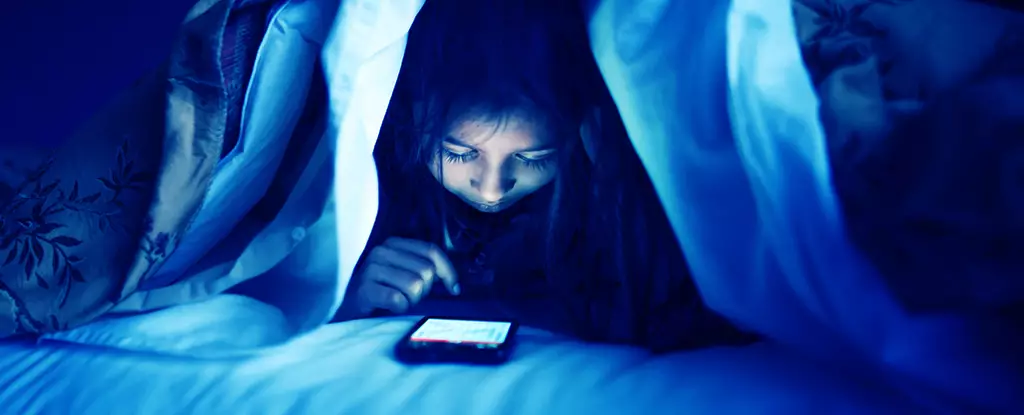The significance of light in regulating our biological clock cannot be understated. We are all familiar with the way sunlight tells our brain that morning has arrived, signaling the need to reset our internal clocks. However, recent research conducted by a team of scientists from the University of Basel in Switzerland and the Max Planck Institute for Biological Cybernetics in Germany has shed new light on the influence of perceived colors on our daily biological rhythm. This groundbreaking study challenges conventional wisdom regarding the impact of blue light on our sleep patterns and raises questions about the use of digital technology during nighttime.
In the back of our eyes, we have light-sensitive photoreceptors called intrinsically photosensitive retinal ganglion cells (ipRGCs). These cells are responsible for synchronizing our biology with the natural cycles of day and night. While the ipRGCs do not directly contribute to our perception of color, they receive information from nearby cone cells that are responsible for color perception. This revelation led the researchers to investigate whether the cones and the colors they perceive have any influence on our internal clock.
The prevailing scientific advice cautions against exposure to devices that emit blue light, such as smartphones, computer monitors, and tablets, especially during nighttime. This advice is rooted in the understanding that ipRGCs are primarily responsive to short wavelengths of electromagnetic radiation, approximately 490 nanometers in size. If these short wavelengths dominate the light we encounter, the blue cones in our eyes would be highly active. This would signal our brain that everything has a blue hue, potentially disrupting our sleep.
The team, led by Christine Blume, decided to delve deeper into the complex relationship between perceived colors and our internal clock. Blume drew inspiration from a 2019 study conducted on mice, which suggested that yellowish light might have a stronger influence on the internal clock than bluish light. To investigate this further, the team designed a 23-day-long experiment involving 16 healthy adult volunteers.
After establishing a consistent bedtime for a week, the participants visited the lab three times. During each visit, they were exposed to a controlled light source emitting either a constant white glow, a bright yellow light, or a dim blue light for one hour in the evening. The volunteers underwent various tests, including monitoring their brain waves, heart rates, and hormone levels to assess the impact of different light conditions on their sleep patterns.
Contrary to expectations, the analysis of the data did not reveal any indication that the perceived color of the light affected the duration or quality of the participants’ sleep patterns. Interestingly, all three light conditions caused a delay in sleep, suggesting that the impact of light on our sleep is more complex than previously thought.
The lack of a significant difference between the three light conditions does not discount the impact of ‘blue’ wavelengths of light on our biological rhythm. It suggests that the presence of other wavelengths can influence how the ipRGCs respond. For example, white light containing a mixture of wavelengths, including blue, can stimulate cone cells to perceive colors such as yellow, red, or purple. This complex interplay of perceived color and ipRGC function may still affect our sleep cycles. Additionally, light that appears blue but lacks sufficient intensity to activate the ipRGCs may have little effect on our body’s circadian rhythms.
The findings of this study have important implications for the development of future technologies. It raises the possibility of designing devices, such as smartphones, with a night mode that emits warmer tones. By reducing the proportion of short-wavelength blue light in the display, it may be possible to mitigate the impact on our sleep patterns. However, it is important to note that such technology has not yet been implemented in commercial mobile phone displays.
The influence of light color on our biological rhythm is a complex phenomenon that continues to be unraveled by scientific research. While the study challenges our previous understanding of the impact of blue light, it also reveals the intricate relationship between perceived colors, cone cell stimulation, and ipRGC function. Further studies are necessary to fully comprehend these complexities and refine our approach to light exposure, especially during the evening hours.


Leave a Reply